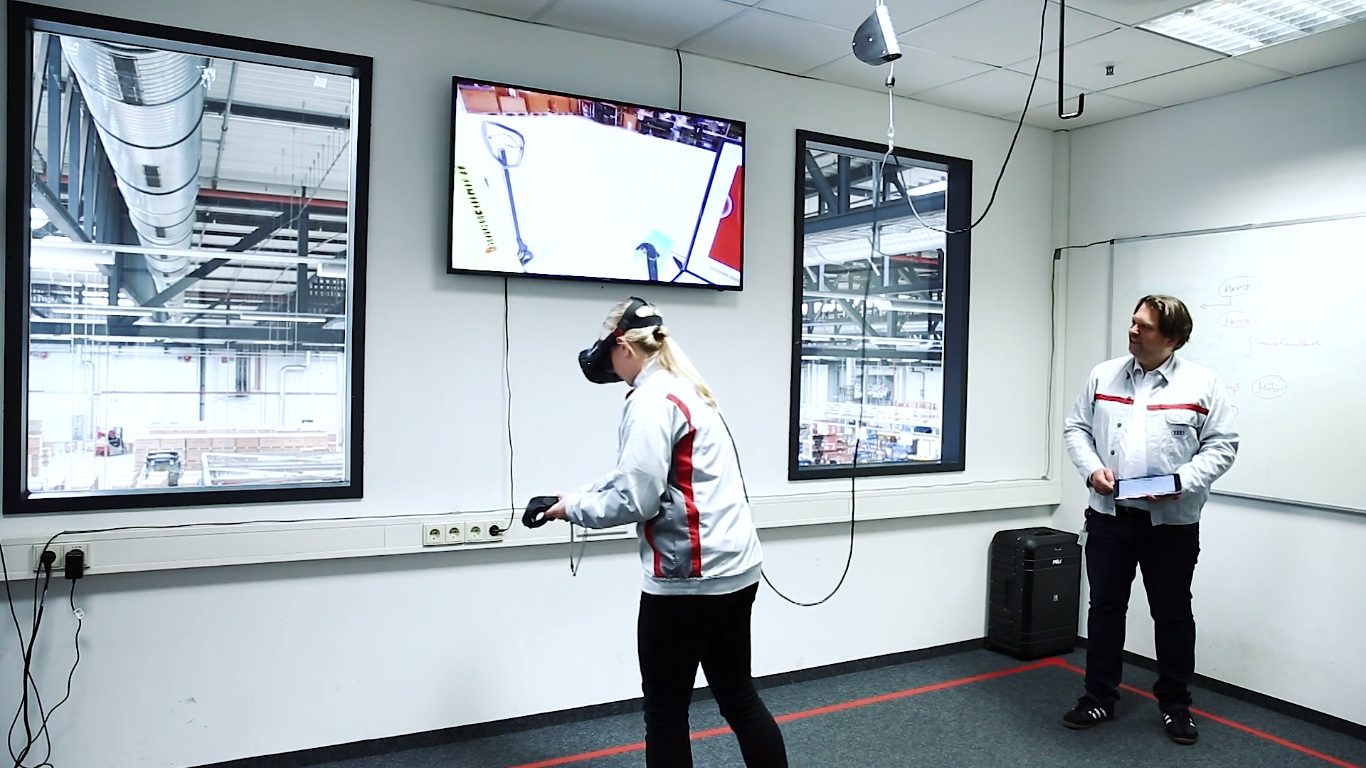Volkswagen Group, the multi-brand automotive company, has developed VR apps to make long-distance collaboration in production and logistics an easier task. Using the HTC Vive, the company has created what it calls the Volkswagen Digital Reality Hub Group, a VR platform that will help the company’s employees collaborate across the Audi, SEAT, ŠKODA and Volkswagen brands.
The company has used its suite of VR apps to allow multiple users to simultaneously collaborate while physically located between Volkswagen logistics office in the Czech Republic and the company’s headquarters in Wolfsburg, Germany. Apps in the platform already include VR logistics training, realistic workshop environments created using photogrammetry, and VR spaces for exchanging best practices—all of course with avatars so employees can talk face-to-face.
Developed with VR production studio Innoactive, the Volkswagen Digital Reality Hub made its public debut at the Digility conference and exhibition in Cologne this week.

Mathias Synowski, a VR user from Group Logistics, says the company’s VR app will “make our daily teamwork much easier and save a great deal of time.”
“Virtual reality creates the ideal conditions for cross-brand and cross-site collaboration,” Jasmin Müller from Audi Brand Logistics explains.
“[E]xchanging knowledge is just as important as bundling knowledge. That’s why we came up with the Volkswagen Digital Reality Hub central platform in collaboration with Innoactive. All employees have access to all existing VR elements as well as existing knowledge via the platform. That way, we enable individual units to implement new use cases quickly and jointly move in VR applications so they can plan new workflows interactively,” says Dennis Abmeier from Group IT.
The Volkswagen Digital Realities Team is currently developing more apps for production and logistics intended for the company’s fleet of HTC Vive Business Edition headsets.







